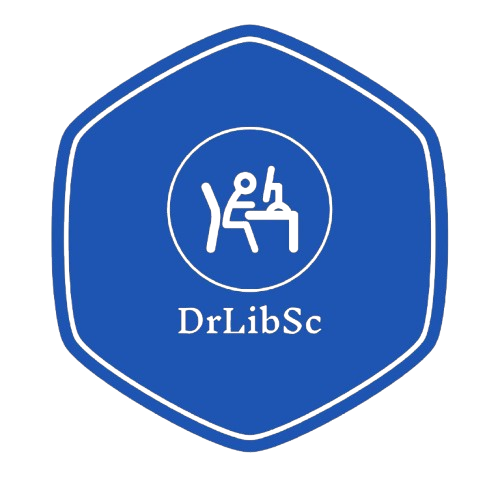Webometric Analysis of Maritime Training Institutes Affiliated to Indian Maritime University (IMU) in India
DOI:
https://doi.org/10.63880/jlii.v1i1.11Keywords:
Webometrics, Web Impact Factor, Maritime Education, SEO Metrics, Ahrefs, Moz, Digital Visibility, Indian Maritime UniversityAbstract
Purpose: The study aimed to assess the online visibility of Maritime Training Institutes affiliated with the Indian Maritime University and to examine how effectively these institutes manage their digital presence in a competitive higher education environment. It sought to identify variations in search visibility, influence, and digital performance across institutions.
Methodology: A webometric approach was adopted covering the period from 2023 to 2025. Data were gathered using tools such as Ahrefs, Moz Pro, SimilarWeb, and Google PageSpeed Insights. Indicators including domain and page authority, backlink quality, website traffic, and site speed were analyzed to evaluate web impact factors and overall discoverability.
Findings: The analysis revealed considerable differences among institutes. Some Maritime Training Institutes demonstrated strong visibility in search rankings and robust digital influence, while others had limited presence and poor optimization. Weaknesses included inadequate backlink quality, reduced traffic flow, and slow-loading websites, all of which restricted accessibility and outreach.
Implications: The study underscores the need for institutes to adopt systematic digital strategies. Recommendations include improving search engine optimization, enhancing website design for responsiveness, ensuring faster loading times, and building credible backlink networks. These measures can significantly improve online discoverability, strengthen institutional reputation, and expand the global scholarly and professional impact of Maritime Training Institutes.
References
Aguillo, I. F., Ortega, J. L., & Fernández, M. (2008). Webometric Ranking of World Universities: Introduction, Methodology, and Future Developments. Higher Education in Europe, 33(2–3), 233–244. https://doi.org/10.1080/03797720802254031
Aminpour F, Kabiri P, Otroj Z, Keshtkar AA. Webometric analysis of Iranian universities of medical sciences. Scientometrics. 2009;80(1):253-264. doi:10.1007/s11192-008-2059
Bakkiyaraj, N. (2017). Websites of Physical Education Institutions in India: A Webometric Analysis. Kelpro Bulletin, 21(2), 34–41.
Ingwersen, P. (1998). The calculation of web impact factors. Journal of Documentation, 54(2), 236–243. https://doi.org/10.1108/EUM0000000007167
Jalal, S. K., Biswas, S. C., & Mukhopadhyay, P. (2009). Webometric analysis of Central Universities in India: A study. In International Conference for Internet Technology and Secured Transactions, ICITST 2009. IEEE Computer Society. https://doi.org/10.1109/icitst.2009.5402605
Jalal, S. K., Biswas, S. C., & Mukhopadhyay, P. (2010). Web presence of selected Asian countries: A webometric study. Collnet Journal of Scientometrics and Information Management, 4(2), 57–68. https://doi.org/10.1080/09737766.2010.10700893
Jeyshankar, R. (2019). Webometric analysis of Indian university websites. Library Philosophy and Practice, 2019, 1–14.
Kadam, S. D., & Bhusawar, S. C. (2021). Websites of Top-Ranked Indian Higher Education Institutions: A Webometric Analysis. Library Philosophy and Practice, 2021, 1–26.
Manoj, M. (2017). Websites of Sainik Schools in India: A Webometric Analysis. International Journal of Information Management, 2, 7, 43-49.
Maqbool, T. (2019). A webometric analysis of select knowledge portals of national repute in India. Library Philosophy and Practice, 2019.
Meghwal, A. (2023). Webometric Analysis of NIRF-Ranked Universities in India. Indian Journal of Library and Information Science, 13(1), 19–33.
Mishra, A. K., & Mandalia, S. H. (2024). Webometric Analysis of Indian Maritime University's Online Presence. SSRN. https://doi.org/10.2139/ssrn.4681457
Orhan, M., & Bayraktaroglu, A. E. (2023). Usability Evaluation of Maritime Websites with Different End User Groups. In HCI for Maritime Domains (pp. 224–237). https://doi.org/10.1007/978-3-031-25847-3_21
Ramanayaka KH, Chen X, Shi B. (2018). Application of Webometrics Techniques for Measuring and Evaluating Visibility of University Library Websites in Sri Lanka. Journal of University Library Association of Sri Lanka;21(1):1. doi:10.4038/jula.v21i1.7908
Seshaiah, O. & Rekha, R. V. (2016). Websites of Engineering colleges: a Webometric Analysis. International Journal of Information Dissemination and Technology, 4(February), 63–70.
Smith A, Thelwall M. (2002). Web impact factors for Australasian universities. Scientometrics;54(3):363-380. doi:10.1023/A:1016030415822
Thanuskodi, S. (2012). A Webometric Analysis of Selected Institutes of National Importance Websites in India. International Journal of Library Science, 1(1), 13–18. https://doi.org/10.5923/j.library.20120101.03
Verma, M. K., & Brahma, K. (2023). Evaluating Central Universities in North-East India: A Webometric Perspective. DESIDOC Journal of Library & Information Technology, 43(2), 112–121.
Wahyuningrum, T., Aditya, R. M., & Dewi, A. (2021). Revised Web Impact Factor Analysis of Timor Leste University Website During COVID-19 Pandemic. Bulletin of Electrical Engineering and Informatics, 10(3), 1678–1686.
Weintrit, A. (2022). The World’s Webometrics Ranking of Maritime Universities. TransComp-XIV International Conference on Maritime Computer Systems, 1–10.
Indian Maritime University. (2024). List of Affiliated Colleges of IMU. https://www.imu.edu.in (Accessed July 5, 2024)
Downloads
Published
How to Cite
Issue
Section
License
Copyright (c) 2025 Anil Kumar Mishra, Dr. Shishir H. Mandalia

This work is licensed under a Creative Commons Attribution-NonCommercial 4.0 International License.
CC BY-NC 4.0
Deed (See the legal code)
You are free to:
- Share — copy and redistribute the material in any medium or format
- Adapt — remix, transform, and build upon the material
- The licensor cannot revoke these freedoms as long as you follow the license terms.
Under the following terms:
- Attribution — You must give appropriate credit , provide a link to the license, and indicate if changes were made . You may do so in any reasonable manner, but not in any way that suggests the licensor endorses you or your use.
- NonCommercial — You may not use the material for commercial purposes .
- No additional restrictions — You may not apply legal terms or technological measures that legally restrict others from doing anything the license permits.
Notices:
You do not have to comply with the license for elements of the material in the public domain or where your use is permitted by an applicable exception or limitation .
No warranties are given. The license may not give you all of the permissions necessary for your intended use. For example, other rights such as publicity, privacy, or moral rights may limit how you use the material.


